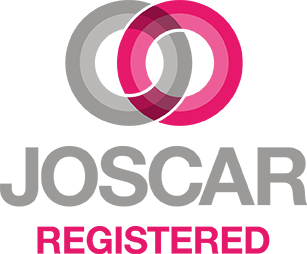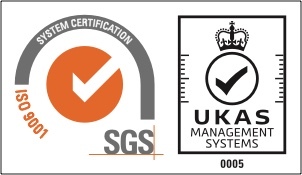
Can you really afford it?
Thursday, 13th July 2017
By, GBS Corporate Training
#Leadership #Success # Management #Revenue @gbscorporate





Poor Leadership practices cause most organisations to operate with a 5 - 10% productivity “drag”. This can cost organisations millions each year.
When Leaders lack the ability to provide direction, coaching and motivation for staff, organisational culture and morale often suffer. Poor leadership is the root cause of high employee turnover and loss of productivity.
The negative impact of poor leadership. Can you really afford it?
In addition to finding that most organisations are operating with a 5 - 10% productivity ‘drag’ (that better leadership practices could eliminate), Smart CEO reports that
- Less-than-optimal leadership practices cost the typical organisation an amount equal to as much as 7% of their total annual sales
- At least 9% and possibly as much as 32% of an organisation’s voluntary turnover can be avoided through better leadership skills
- Better leadership can generate a 3 - 4% improvement in customer satisfaction scores and a corresponding 1.5% increase in revenue growth
DDI, a leading researcher in the corporate world, has created a Cost of Poor Leadership Calculator. According to their calculations, one poor Leader costs a company more than $126,000 over the course of a year due to low productivity, turnover, and staff dissension.
So, there are tangible financial results of poor leadership, and links to failure to achieve Business goals. Can your organisation really afford the impact of poor leadership in these uncertain economic times?
How does poor leadership impact your culture?
Poor leadership results in a negative impact on the culture within an organisation in a number of ways:
1. Lack of Vision
Without a direction, employees are at a loss. They don't know what the goals are of the company and they don't know why they are working with specific processes. They will accomplish only mechanically, not with any intelligent direction, towards a common goal.
2. Lack of Synergy
Poor company/departmental leadership inhibits the development of synergy and may result in fragmented departments and work roles. This means that each employee neglects the importance his work plays in achieving organisational objectives.
A good Leader will communicate with employees regularly to convey a range of information and develop synergy. Encouraging employees to share ideas and engage in open discussions benefits the company and ensures that everyone is aligned in pursuing the same goals.
3. Creating a culture of mediocrity
Poor leadership at the top can slow down any improvement in the abilities of Managers within the Business as a whole. Middle Managers start to emulate their Senior Leaders’ styles of managing people and business decisions. This goes on and flows down the chain of command, eventually becoming a culture in the organisation and resulting in low morale.
“Most people think of leadership as a position and therefore don't see themselves as leaders”. Stephen Covey
4. Low Morale
Poor leadership can result from employees feeling misdirected or uncertain about the company and their jobs. Poor communication contributes to this issue. In some cases, failure to address negative employees or poor performers leads to low morale, because good employees often have to pick up the slack.
Tension between employees and Managers can affect productivity, performance and wellbeing. Additionally, employees feeling they are being let down or criticised by Managers can end up disillusioned and demoralised.
In simple terms:
Poor leadership = higher costs = lower profit
The impact on organisational culture has a direct link to increasing business costs and reducing profit in the following ways:
1. Higher staff turnover
It comes as no surprise that poor leadership can result in higher employee turnover. Employees who aren't motivated and are burned out from a poor culture begin looking for other jobs. Companies struggle when they lose top performers and experienced employees and must replace them with new hires.
There are a range of costs associated with replacing an experienced employee, including the cost of covering the position while vacant, the cost of finding a replacement and the cost of getting a new person up to speed.
"You have to be honest and authentic and not hide. I think the Leader today has to demonstrate both transparency and vulnerability, and with that comes truthfulness and humility."
Howard Schultz, Starbucks CEO
2. Failure to meet goals
A consequence of poor leadership is failing to inspire employees to deliver their best results and meet their potential. In order to achieve the best results, employees at every level need to be committed to the company and to the attainment of goals, both financial and otherwise. Without a supportive culture or encouraging Manager, financial goals are likely to be missed.
3. Reduction in customer satisfaction
Research has found that better leadership can generate a three to four per cent improvement in customer satisfaction scores and a corresponding 1.5% increase in revenue growth. The reverse of this (i.e. poor leadership) will have a negative impact on customer satisfaction scores and therefore overall revenue.
4. Overall reduction in productivity
Productivity is the most impactful way that leadership helps or hinders the bottom line. Poor leadership negatively impacts employee satisfaction, which in turn negatively impacts employee productivity.
While it is unrealistic to expect workers to be 100% productive through every working day, research finds that most organisations are operating with a five to ten per cent productivity drag that better leadership practices could eliminate.
The good news is that when organisations undertake leadership development training - there is enormous potential for organisations to improve their bottom line (source 2010 - Zenger Folkman research).
Can your current Leaders support, delegate, inspire, celebrate, and challenge their staff to perform at the highest level?
GBS can help you with this problem and develop a bespoke leadership training programme that is a perfect fit for your organisation. We have designed and delivered programmes for many multi-national clients, helping them to build their leadership potential and improve their bottom-line.
GBS also provide a series of Situational Leadership® training courses related to different applications of this world-renowned leadership model. We help Leaders to learn to appropriately balance their task direction with proper relationship behaviour, which helps to maintain high levels of consistent performance across team members, improving morale and impacting positively on organisational productivity.







